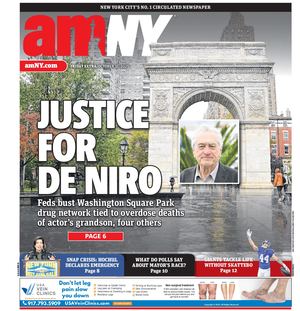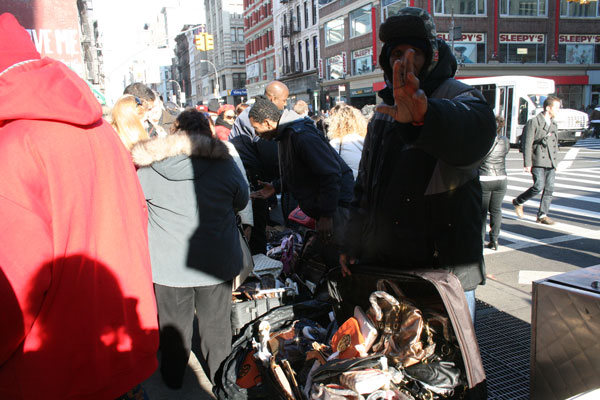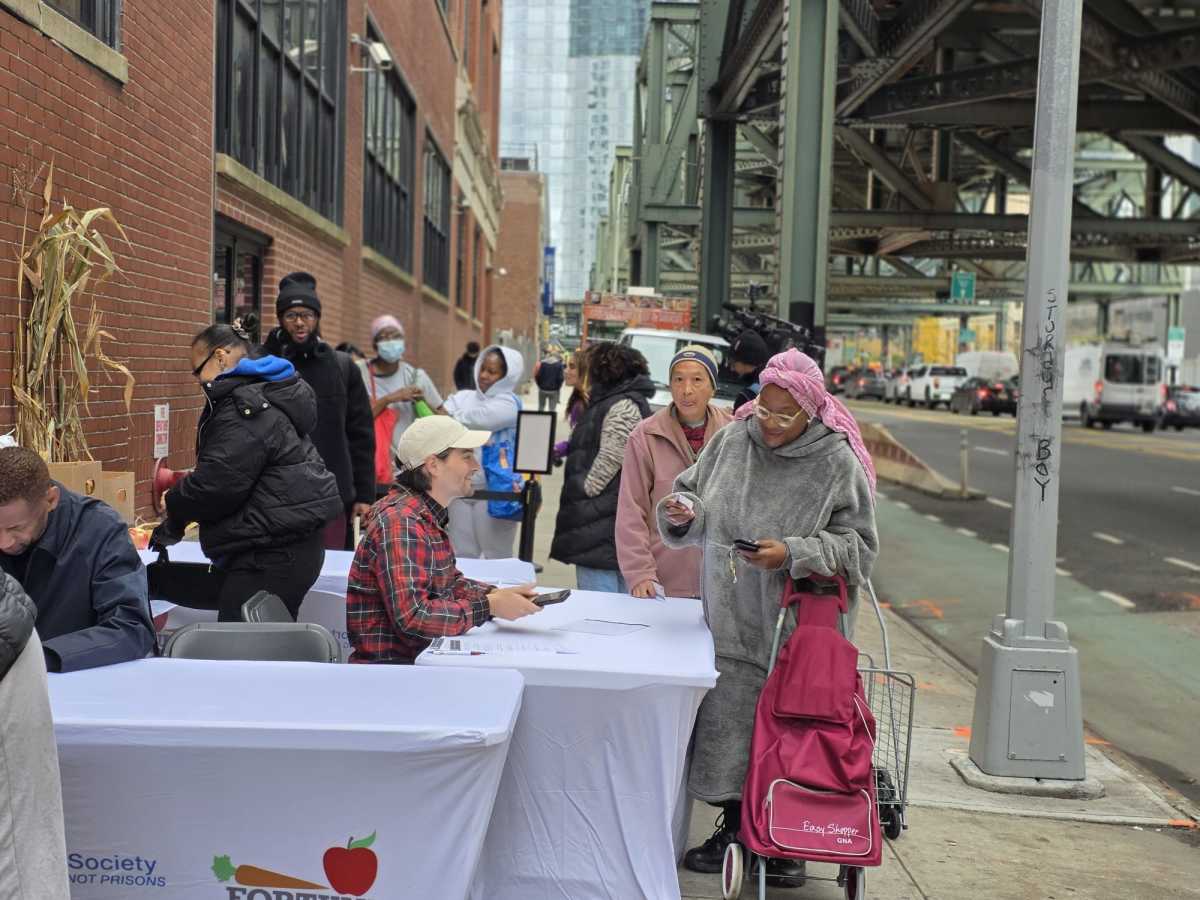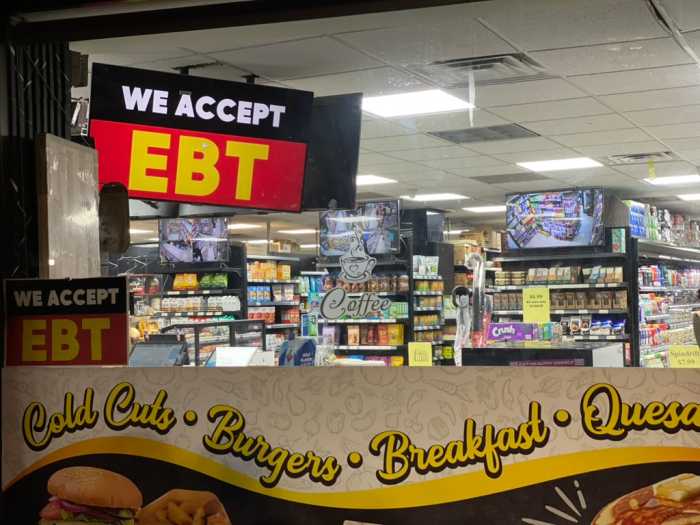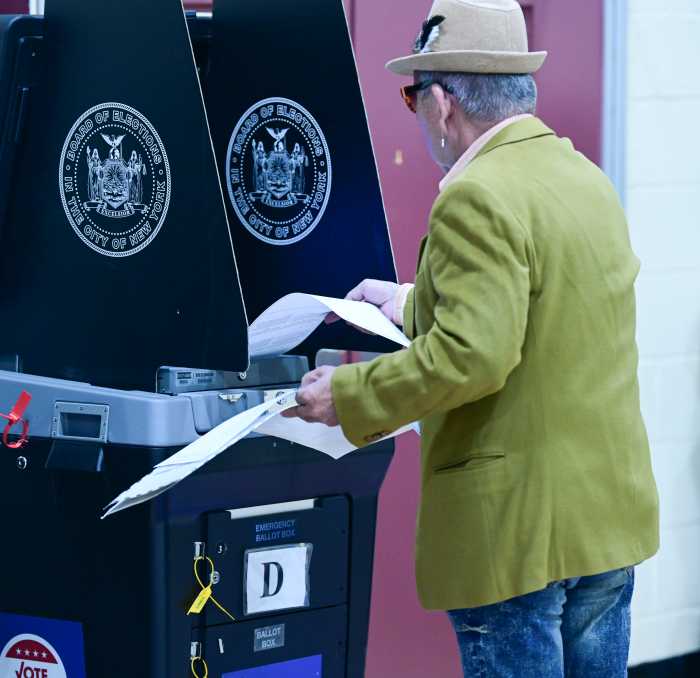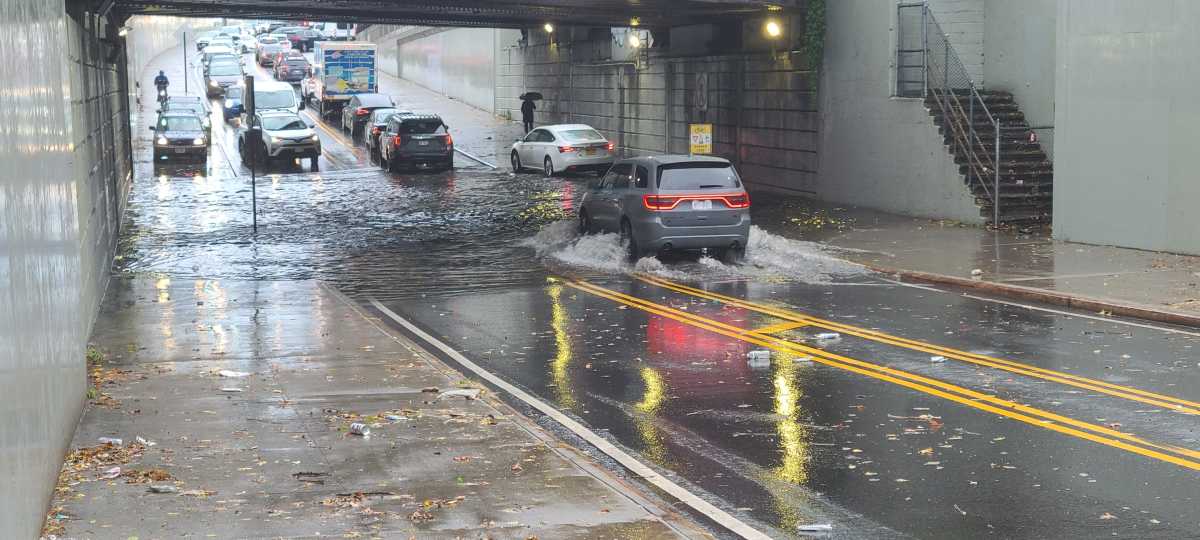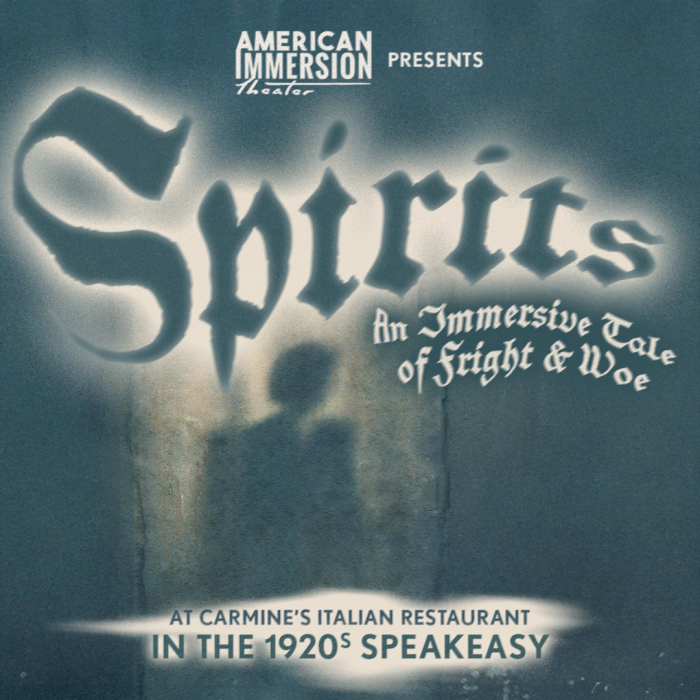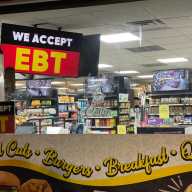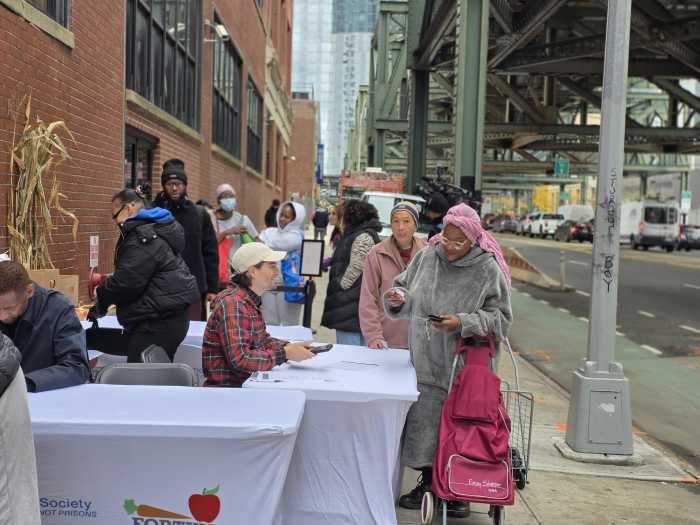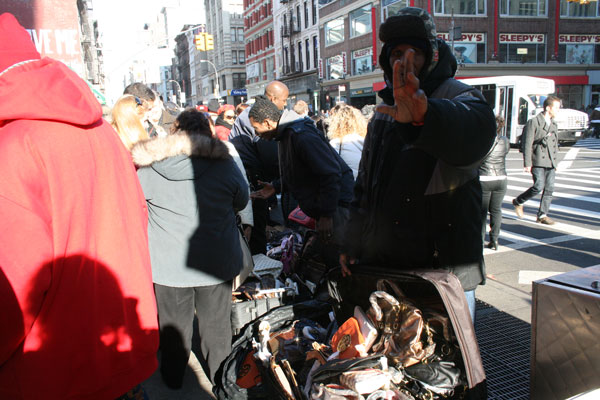 [/media-credit]
[/media-credit]
One of them succeeded in luring 18-year-old Calvin Morley of Bradenton, Florida. “They were trying to sell us G-Shock watches, which are normally about $120 new. I bought this one off a guy for $20,” said Morley as he pointed to the watch on his wrist.
Psyched about his purchase, Morley sought out another watch from a different vendor. “He [the vendor] was sketchy about it — he was about to open his briefcase, and then he said, ‘Hold on, the cops are coming.’ I didn’t end up getting it.”
Thanks to Morley and scores of other Canal Street shoppers, selling illegal, counterfiet merchandise is a multi-billion dollar industry in NYC, according to the International Anti-Counterfeiting Coalition. With the passing of yet another tourist-packed holiday season Downtown, it is continuing to thrive.
Local residents, meanwhile, are growing increasingly fed up by the congestion it is causing on their streets. The illicit activity on Canal Street, in particular, is more prevalent than ever, some say, despite stepped up enforcement by the local police precincts.
“It’s been a zoo. They’re everywhere,” said Lispenard Street resident and Community Board 1 member Paul Cantor, who often has to contend with car traffic along Canal Street when the sidewalk is inundated with vendors. “I don’t see any reason why I should [be forced to] walk on the street to try to get home.”
“We’re unable to enter our doorway at certain times, because there are counterfeit peddlers encroaching on our property, trying to take over our threshold,” said David Kapp, president of a co-operative at 305 Canal St. “These are not people that respect the fact that we live there, because there is so little enforcement by the N.Y.P.D.”
The cops however contend they have increased enforcement. In spring 2010, the NYPD launched a Canal Street initiative to more effectively crack down on the criminal sales.
One approach the Department has explored is having more eyes on the street to catch the vendors in the act of selling counterfeit goods, since mere possession of the goods isn’t a crime unless the vendors have warehouses full of them, according to Sergeant Gregory LeRoy, a member of the Manhattan South peddlers’ task force.
“I’d say between the 1st and 5th precincts, there is a continuous presence down there at all times,” said LeRoy.
Another strategy is the collaboration with brand-name merchandise companies in order to identify the knock-off merchandise, since the sale of imitation goods is allowed so long as they aren’t direct knock-offs. Merchandise is considered illegal when there is an actual logo signifying a specific brand.
“When we’re looking to do certain enforcements, companies would come with us Downtown and do undercover purchasing to identify merchandise,” said LeRoy. “The goal for their own company is to see how [counterfeit manufacturers] are reproducing their products. They also train us on how to identify the real [accessories] compared to the counterfeits.”
But these enforcement tactics only go so far. While cops have handcuffed 2,764 salesmen since the Canal Street initiative began, 85 percent of the arrests led only to misdemeanor charges, according to N.Y.P.D. statistics.
“The charges are not sticking in court, and the vendors often get a small [amount] of community service [as punishment],” noted LeRoy. “No repeat offenders are being put in jail. You arrest them one day, and they’ll be out the next.”
Councilmember Margaret Chin believes that to successfully tackle the problem the city needs to target the demand side of the trade by educating and even penalizing counterfeit purchasers. She introduced a bill in the City Council last year that, if passed, would fine buyers up to $1,000 and carry a jail sentence of up to one year.
“This is really the smart and cost-effective way to lessen the demand,” said Chin of the law. “It gives [officers] another tool when they see this kind of activity going on.”
However, Councilmember Pete Valone, who chairs the City Council’s public safety committee, has reservations about the proposed enforcement method. He nevertheless plans to schedule a hearing for the bill in the early spring.
“I agree with [Councilmember Chin] that this is a serious problem and that we need to do some oversight on this topic,” said Valone. “But as a former prosecutor, I can tell you it would be a very, very difficult law to enforce. You would need proof beyond reasonable doubt, and I’m not sure that’s the best use of our undercover [officers] in New York City.”
“It seems easy enough to make arrests of the sellers,” Valone continued, “based on what’s going on.”
Both Cantor and Kapp support Chin’s bill and believe it could lessen the demand for fake merchandise. Kapp, for one, has often witnessed Canal Street vendors getting away with the sales by playing “cat-and-mouse” with the cops.
“The cops swing by, they fold up the blankets, and then they stand there,” said Kapp. “The cops go down the street, they open up the blankets, and they put the merchandise [back] out on the sidewalk.”
For now, though, shoppers such as Alex Vasquez from Essex County, New Jersey, can continue to buy knock-off merchandise without being penalized.
“I bought some colognes, some earrings and a chain for a total of $80,” said Vasquez. Asked about the counterfeit activity, he said, “I’m guessing if it’s going on, someone must have noticed and [is] allowing it.”
